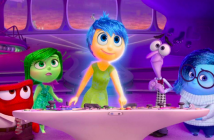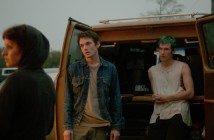
Editor’s Notes: Carrie is now out in theatres; for a review of the film read Parker’s review (20/100) and for a review of the original Carrie, read John’s review 85/100.
Horror films have a long history as a form of entertainment and the strength of the genre stands the test of time. It’s not just around Halloween that we settle down for a good fright, evidently we love the thrill of a healthy scare and enjoyment spans a vast array of audience demographics. What seems to remain a key element is the inclusion of characters that present either the attraction of ability to relate and stereotype, or the escapist release of imagining far beyond the social norms. The necessity of including or actively excluding the male or female gendered character in a horror narrative can set up the audience demographic, but can also provide the horror genre with a conscious form of narrative evolution. In a genre that continues to morph to deal with societal impacts, looking at one particular trait can unveil what some might call a truer map of genre progression.
Women and horror genre films have a complicated history. Gender studies theorists and film historians have for centuries looked at the roles of female characters within horror narratives.

The Descent
Women and horror genre films have a complicated history. Gender studies theorists and film historians have for centuries looked at the roles of female characters within horror narratives. Amongst much strategic analysis of female characters, there are many issues that both define and revolutionise the horror genre. As far as I’m concerned, female characters have always had an integral placement in horror films and as these ideals shift, women will continue to have an influential position in the many faces of the horror film narrative.
As there are many assets of the use of a female character in a horror film, there are plenty of topical routes to go down. The recent remake of the horror classic Carrie is what shapes my article, taking a focus on the female centric horror film. I’m looking at films that use female characters to drive the narrative. This can be as a protagonist experiencing the horror or as a sub-character that is the source of the horror. Even within this framework the female horror character takes on many forms. I’m splitting this into two rather brief categories, female characters as victims and as monsters. I’ll try to cover as much as I can, but due to the flexibility of the horror genre it’s a seemingly endless amount of examples. Those films mentioned are selected favourites, and are by no means comprehensive of the genre modes, but will hopefully develop a thirst for more.
Typically speaking, female characters are the victims of the horror film genre. Ranging from the damsel in distress in need of rescue from early Hollywood features, to the sexed up receivers of the recent torture porn slasher style flicks. Terrifyingly and innocently caught up in events beyond their control, those that started out as the love interest have progressed to scantily clad models, but still serve the purpose of emitting ear piercing screams that chill the bones. The traditional scream and faint victim can be seen in the silent classics like The Phantom of the Opera and The Mummy but the downright gruesome victimisation of female characters can be seen in films like Hostel and Saw. These are complete contrasts in horror narrative style and all the female characters here simply act as victims, all serving the purpose of having the horror inflicted upon them. There exists a sort of mid-ground development with more adaptable female characters that showed a form of mental strength, such as Mina in Dracula, but she succumbs to the power of evil and thus needs rescued by her fiancée. Victims aren’t gender specific as The Texas Chainsaw Massacre and I Know What You Did Last Summer have shown, but it is more gender typical to have screaming women who can’t save themselves.
Victims aren’t gender specific as The Texas Chainsaw Massacre and I Know What You Did Last Summer have shown, but it is more gender typical to have screaming women who can’t save themselves.
An interesting example of gender reversal in the victim role is in Tim Burton’s Sleepy Hollow where the female does require the aid of a hero, but for legalities that hold her back as a woman in the turn of the 19th century. The intelligent heiress is saved by the fainting constable. As a love interest Katrina is the driving force behind Ichabod Crane’s mystery solving on a case he would willingly have passed on otherwise. Crane’s ability to solve the case comes from his good research skills rather than his active defeat of the force of evil behind the murders, not so typical of a horror film male hero.
In a victim centred narrative where the victimisation of the female character is at the heart of the plot, there are a few narratives that have instigated a more modernist twist wherein the victim locates the source of horror inflicted upon her and without the aid of a male hero manages to escape from the horror. One of the best British horror films of recent years The Descent focuses on one key female victim, but she’s the perfect self-made survivor of the horror narrative. When a group of women go on an adventure weekend and become trapped in an unmapped cave system with hungry creatures they must rely on physical ability and strength of mind to stay alive. All the traits of a male horror narrative hero are attributed to out protagonist as the rest of the group are picked off due to their weaker physicality and lack of mental endurance under the circumstances. Switchblade Romance offers the same sort of female horror character that starts as victim and comes out a survivor in true action hero style. This survival of the fittest is indicating a move to more powerful female horror characters that is known to most audiences from the sci-fi classic Alien with Sigourney Weaver.
Often surviving the horrific situation isn’t the source of the horror within the narrative as Carrie identifies. A bullied teenager is the recipient of a high school prom prank and after discovering her telekinesis abilities, she wreaks havoc upon her tormentors. In a revenge plot extraordinaire, Carrie is transformed from innocent victim to exactor of vengeance, making her a survivor, but ultimately the character is remembered as a monster in the original film.

Ringu
When it comes to horror, a good monster based narrative is what I’m all about. The monster is often the driving force of the narrative and so it’s no surprise that female monsters have been a big movement. There are varying and debatable forms of monsters and just like female characters in horror, female monsters are diverse. As monsters are generally created to offer a moral undertone and dilemma, the female monster largely exists to comment on social pressures and lifestyle choices. In the case of Carrie the social pressure of a bullied teenager cause her to revert to using her powers for terrifying revenge on those who’ve wronged her. Carrie’s moral dilemma is with her choice to use her powers for evil because she cannot recover from the climax of public humiliation. Another monster in a similar reasoning presents herself in Ringu. A young girl’s revenge for her unfortunate death presents itself in the form of a VHS video with a very experimental style of puzzle imagery which after watching the viewer must solve in a matter of days or else she’s coming for you’re life. This type of monster is popular in Asian cinema as Dark Water and Ju-on alongside their Hollywood remakes demonstrate. All these young girls are innocent before their death and exist as monsters to enact revenge for their unsolved cases of death. In these films revenge is enacted on seemingly innocent parties, which makes them the best kind of female monsters as they see nobody as exempt from suffering their wrath.
Apart from female monsters who have actively chosen to unleash their evil powers, there are those who act this way through the fault of another, i.e. via possession. Take The Exorcist for example, where a young girl possessed by a demon commits horrific and gruesome acts upon the two priests called in to save her soul. The girl has no control over her actions and that’s what makes her an extreme case of a female that drives a horror narrative. In The Exorcist the morality lies in saving the girl, but in recent possession comedy Jennifer’s Body the emphasis is on ending the character’s actions because she’s not worth saving. Possessed by a succubus, Jennifer is the sexy cheerleader getting all the attention, but when boys start going missing it’s down to her geeky ex-best-friend to end her tirade. In a social commentary about popularity in school, Jennifer’s sexy image is what allows her to consume boys. The wolf in sheep’s clothing morality works a treat as image is portrayed as monstrous.
Thinking of monstrous image and female characters always brings up Bride of Frankenstein where beauty (or therein lack of by human standards) is in the eye of the beholder for this creation of female monster.
Thinking of monstrous image and female characters always brings up Bride of Frankenstein where beauty (or therein lack of by human standards) is in the eye of the beholder for this creation of female monster. Of course the concern of female image can be demonised as is the morality of The Wasp Woman. Janice, the powerful owner of a cosmetics business, jumps at the chance to be the first human tester of a youth serum made from wasps, but with terrible consequences when the injections wear off. Here the quest for youthful looks is a forewarning for messing with nature, not unlike the sci-fi classic The Fly.
Female body image and horror has a relatable tone and more recently a dark take on gothic sub-culture gave a new idea on the female monster. In American Mary a medical student delves into the world of underground surgery for extreme body modification procedures after being disillusioned by the medical profession. Mary practises what can be seem by social norms as Frankenstein style alterations to the human form for big money. In the name of science and personal skill development, Mary represents a strong female character by taking matters into her own hands with an alternative horror narrative. Certainly an original piece and directed by the two Soska sisters known for their work in the horror genre. American Mary presents a movement in the genre’s use of female character centric narratives.
The lines between monster and victim are becoming more frequently blurred and audience opinion dependant. Remakes are another ball game with horror films and the use of a female centric narrative. Largely the basic narrative remains the same and is the reason for the remake. Smaller aspects of the narrative are updated to provide a new angle for contemporary audiences. In the remake of Carrie a lot of the character traits and plot devices are still very relatable, just updated, so it’ll be interesting to see what she comes out as on the majority vote.



